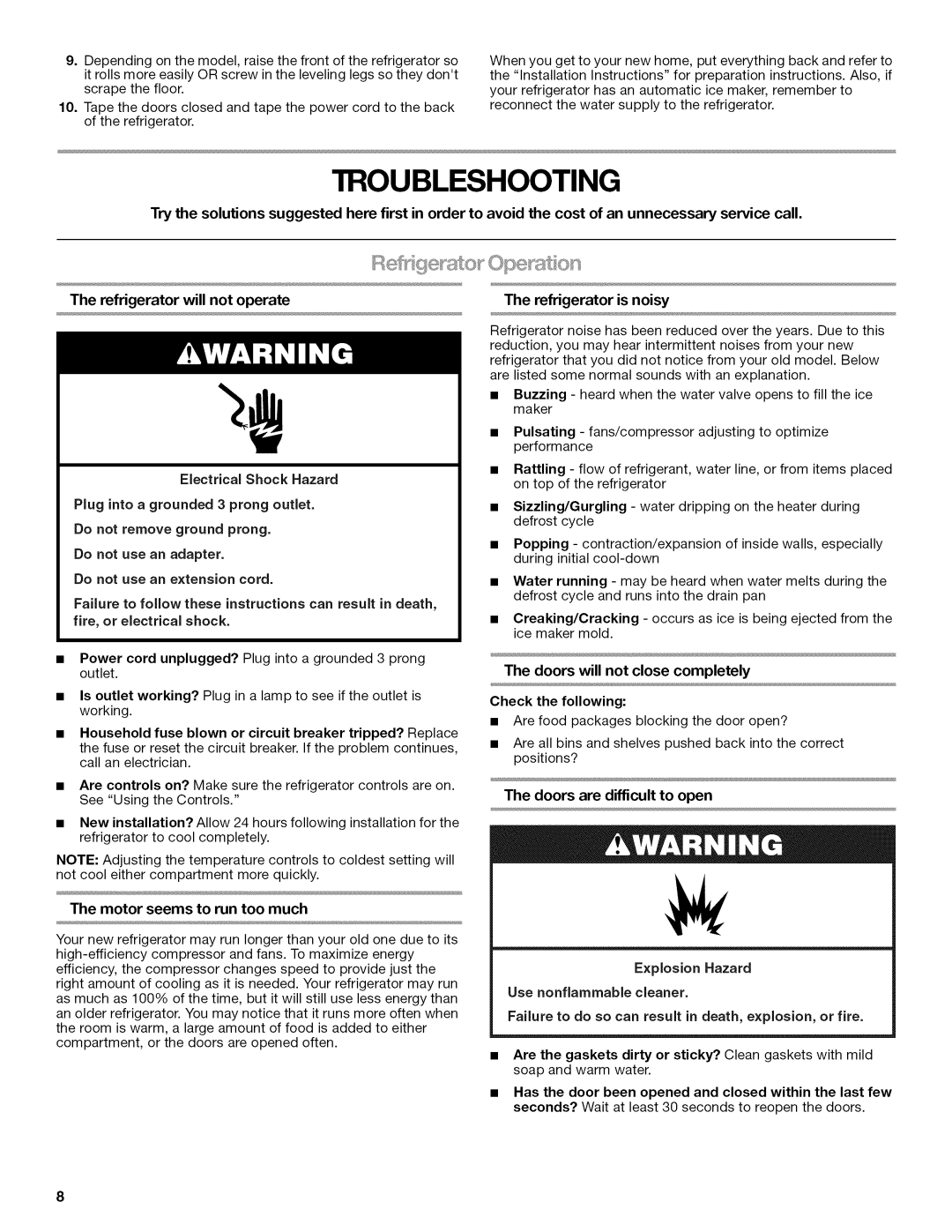10646032800, 10645439801, 10646022801, 10646029800, 10645432801 specifications
The Kenmore models W10192868A, 10646033800, 10646033801, 10645423800, and 10645432800 are part of a well-regarded lineup in the realm of home appliances, specifically refrigerators and their components. These models are designed with an emphasis on efficiency, convenience, and modern aesthetics, catering to a range of consumer needs.One of the standout features of these Kenmore models is their commitment to energy efficiency. They come equipped with advanced technology that helps minimize electricity consumption, making them eco-friendly choices for households looking to reduce their carbon footprint and energy bills. The Energy Star certification on many of these models is a testament to their performance in this regard.
Another significant characteristic of these Kenmore models is their spacious interiors. With flexible shelving options, including adjustable shelves, crispers, and bins, these refrigerators offer ample storage space for various items, from large containers to delicate produce. This adaptability ensures that users can organize their food and beverages in a way that suits their lifestyle.
In terms of cooling technology, these refrigerators often feature advanced temperature management systems. This ensures that every corner of the fridge maintains an optimal temperature, preserving the freshness of food for more extended periods. Many models also incorporate humidity-controlled crispers, which help keep fruits and vegetables fresh by regulating moisture levels.
Convenience is another key attribute of the Kenmore line. Many of these models include features such as water and ice dispensers, door alarms, and smart technology that allows users to monitor and adjust settings remotely through their smartphones. This level of connectivity is increasingly essential for today’s tech-savvy consumers.
Durability is also a hallmark of Kenmore appliances. The materials used in the construction of these models are designed to withstand daily wear and tear, ensuring that they provide reliable service over the years.
In conclusion, the Kenmore W10192868A, 10646033800, 10646033801, 10645423800, and 10645432800 represent a blend of efficiency, versatility, and modern convenience. With their focus on energy savings, spacious interiors, advanced cooling technology, and user-friendly features, they stand out as competitive options in the crowded market of home refrigeration solutions.

